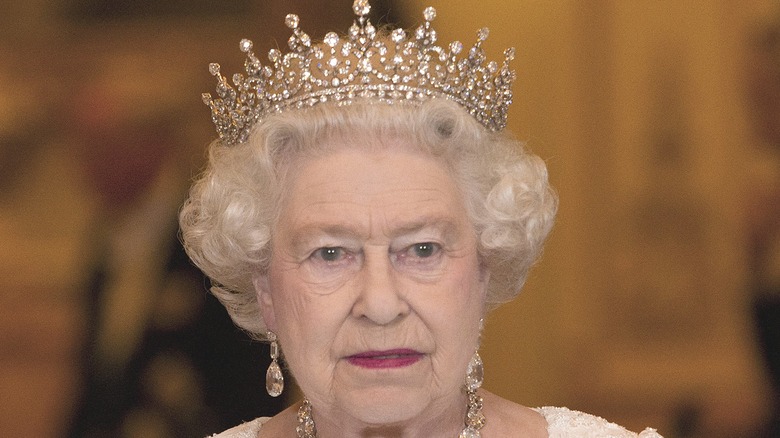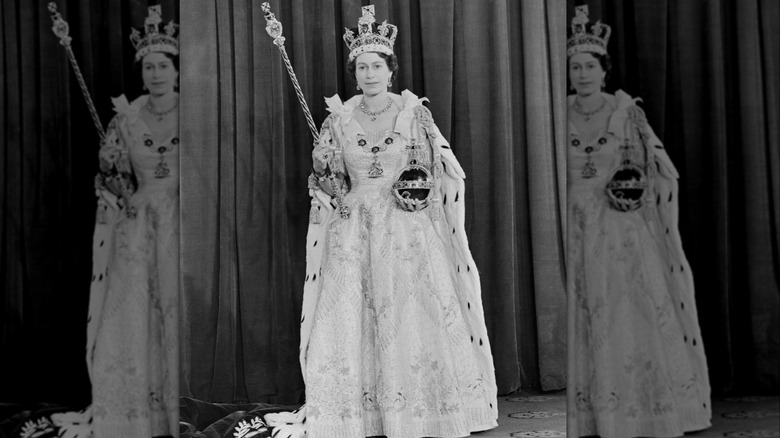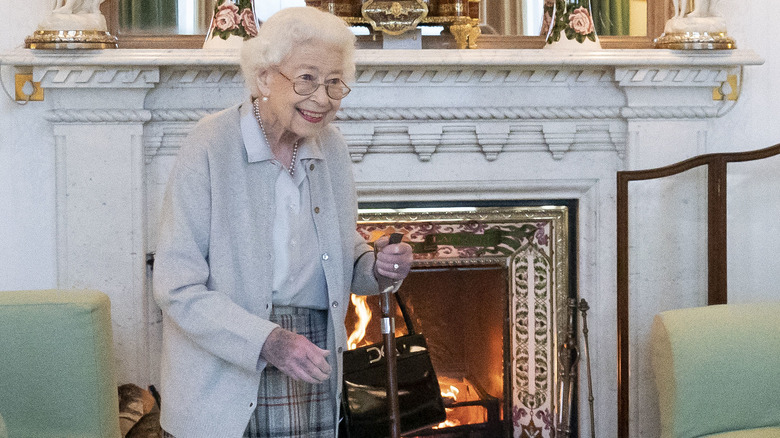The Vow 21-Year-Old Queen Elizabeth Never Broke As Queen
As a child, Queen Elizabeth II never knew she would one day govern the entire British Commonwealth. When she was born, her uncle was still King Edward VIII, and she was enjoying the life of a royal without the weighty responsibilities of an heir. Then, when she was just 10, Edward abdicated the throne so he could marry American divorcée Wallis Simpson. This promoted Elizabeth's father to King George VI, and as he had no sons, Elizabeth became heir presumptive. It was a responsibility for which she was unprepared, but which she took quite seriously.
On her 21st birthday in April 1947, she and her family were on tour in South Africa. Having received many well wishes for her birthday, the princess went on the local radio to give a speech of thanks. The heartfelt speech reflected Elizabeth's awareness of the future that lay ahead. "I declare before you all that my whole life, whether it be long or short, shall be devoted to your service and the service of our great imperial family to which we all belong," she said.
The princess was called on to make good on that vow sooner than she may have anticipated. King George died at age 56 in 1952 from complications of lung surgery, and Elizabeth automatically ascended to the throne. Only 25 and a mother of two, she might have preferred to focus solely on her family, but she knew her destiny extended far beyond the palace walls.
Queen Elizabeth put her country ahead of her personal wishes
Even before her crowning, Elizabeth II had already proven her commitment to her country during World War II. As a full-time member of the Auxiliary Territorial Service — the first female royal to serve in that capacity — she became such a skilled truck driver and repairer that she was known as "Princess Auto Mechanic," per Popular Mechanics. As queen, she continued her military tradition by serving as head of the armed forces. She also ensured the monarchy would continue for generations to come by producing her "heir and spares" — King Charles III and his three younger siblings — and training both Charles and future king William, Prince of Wales, in all things royal.
Long after most people are ready to spend their retirement years taking relaxing cruises and learning a hobby or two, the queen maintained an active working schedule. She visited Commonwealth countries, awarded numerous knighthoods and other honors, hosted dozens of banquets and garden parties, opened each State Session of Parliament, and presided over the annual Trooping the Colour military parade, to name just a few of her duties. As monarch, Elizabeth was also expected to host many foreign heads of state, and she met with 13 out of the 14 U.S. presidents who served during her lifetime. She was also expected to stay neutral in matters of politics, and so she did — though the queen appeared to share strong feelings about Donald Trump during his 2019 visit by wearing a brooch given to her by Barack Obama.
The queen helped lead the U.K. through its darkest times
As Shakespeare wrote, "Uneasy lies the head that wears a crown," and Queen Elizabeth surely had more than her share of sleepless nights during her reign. To keep her vow of putting her country first, she was often called upon to offer a calm and resolute presence to both the U.K. and the world in the midst of local, international, and personal crises. In addition to the six wars she witnessed in her lifetime, the queen also kept her cool during economic recessions, terror attacks, political scandals, and the tragic death of Princess Diana. This last incident was one of the only times she put her family ahead of her country, as she stayed in her Balmoral estate for five days to support Princes William and Harry.
In her final months, as the queen's health and mobility failed, she continued to act in Britain's best interests by maintaining as many appointments as she could, and delegating others to the royals who would follow her. The queen even appeared at her Platinum Jubilee celebrations to oversee the traditional Trooping the Colour procession and receive the adoration of the crowd. Her last act in her record-breaking reign occurred just two days before her death, when she greeted new Prime Minister Liz Truss. The queen was gracious and welcoming as ever as she formalized the government's new transition. Having fulfilled her 75-year vow to her subjects, Elizabeth II made her own final transition.


